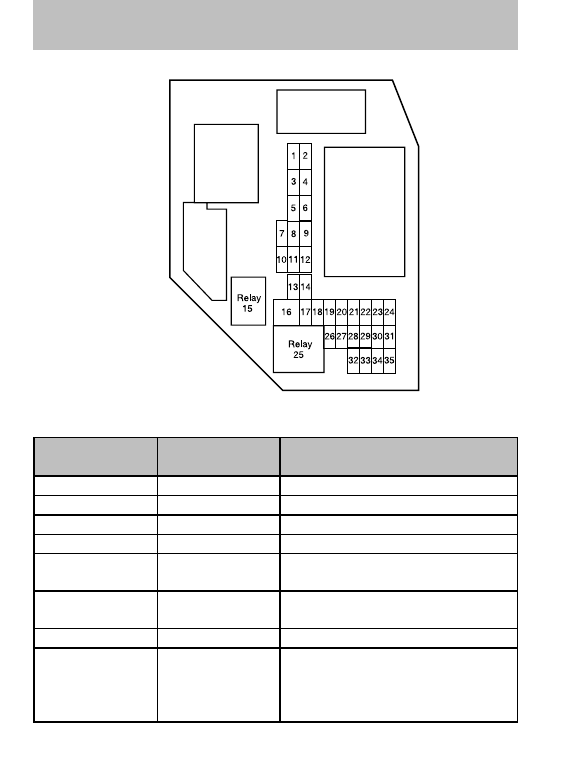Mazda B2300 Truck (2009 year). Instruction - part 12

The fuses are coded as follows:
Fuse/Relay
Location
Fuse Amp
Rating
Passenger Compartment Fuse
Panel Description
1
5A
Instrument panel dimmer switch
2
10A
Trailer tow park lamps
3
10A
Right low beam headlamp
4
10A
Left low beam headlamp
5
5A
Windshield wiper module
(RUN/ACCY)
6
10A
Radio (RUN/ACCY), Door switch
illumination
7
—
Not used
8
10A
Restraints Control Module (RCM),
PADI (Passenger Air bag
Deactivation Indicator), Occupant
Classification Sensor (OCS)
2009 B-Series (mbs)
Owners Guide, 1st Printing
USA (fus)
Roadside Emergencies
184